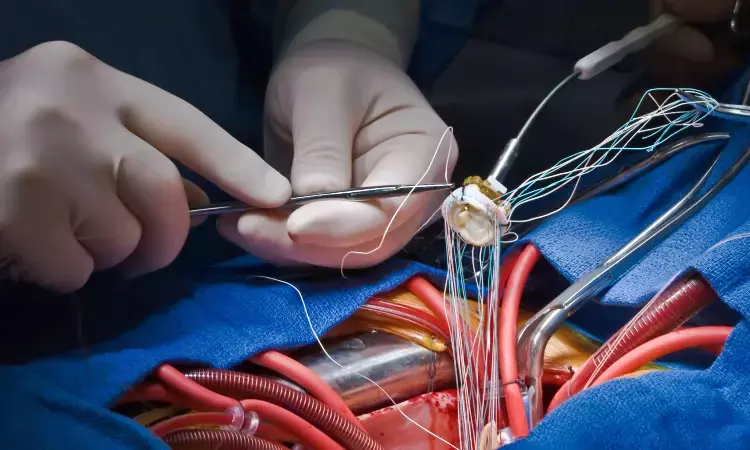- Home
- Medical news & Guidelines
- Anesthesiology
- Cardiology and CTVS
- Critical Care
- Dentistry
- Dermatology
- Diabetes and Endocrinology
- ENT
- Gastroenterology
- Medicine
- Nephrology
- Neurology
- Obstretics-Gynaecology
- Oncology
- Ophthalmology
- Orthopaedics
- Pediatrics-Neonatology
- Psychiatry
- Pulmonology
- Radiology
- Surgery
- Urology
- Laboratory Medicine
- Diet
- Nursing
- Paramedical
- Physiotherapy
- Health news
- Fact Check
- Bone Health Fact Check
- Brain Health Fact Check
- Cancer Related Fact Check
- Child Care Fact Check
- Dental and oral health fact check
- Diabetes and metabolic health fact check
- Diet and Nutrition Fact Check
- Eye and ENT Care Fact Check
- Fitness fact check
- Gut health fact check
- Heart health fact check
- Kidney health fact check
- Medical education fact check
- Men's health fact check
- Respiratory fact check
- Skin and hair care fact check
- Vaccine and Immunization fact check
- Women's health fact check
- AYUSH
- State News
- Andaman and Nicobar Islands
- Andhra Pradesh
- Arunachal Pradesh
- Assam
- Bihar
- Chandigarh
- Chattisgarh
- Dadra and Nagar Haveli
- Daman and Diu
- Delhi
- Goa
- Gujarat
- Haryana
- Himachal Pradesh
- Jammu & Kashmir
- Jharkhand
- Karnataka
- Kerala
- Ladakh
- Lakshadweep
- Madhya Pradesh
- Maharashtra
- Manipur
- Meghalaya
- Mizoram
- Nagaland
- Odisha
- Puducherry
- Punjab
- Rajasthan
- Sikkim
- Tamil Nadu
- Telangana
- Tripura
- Uttar Pradesh
- Uttrakhand
- West Bengal
- Medical Education
- Industry
Meta-analysis finds no Benefit in Routine Use of cerebral embolic protection During TAVI- EuroPCR 2025

The EuroPCR Course Directors have chosen three major late-breaking trials to be unveiled at EuroPCR 2025. These were selected for their strong design, impactful results, and potential to influence clinical practice. One key highlight is a meta-analysis combining data from the PROTECTED TAVR and BHF PROTECT TAVI trials.
The embolisation of debris after transaortic valve implantation (TAVI) for the treatment of aortic stenosis can lead to stroke. Cerebral embolic protection (CEP) devices, which can capture this debris and thus lower the incidence of stroke, have been deployed during TAVI, however, results from their use have been seen as inconclusive.
Recent trials, such as the PROTECTED TAVR1 and BHF PROTECT-TAVI2 have demonstrated no significant difference between the control arm and the CEP arm within 72 hours after TAVI or TAVR.
The current meta-analysis presented by Prof. Rajesh Kharbanda combines the results of both trials to better understand these results and allow for more definitive research for the future use of CEP in these interventions.
• This meta-analysis combined individual patient data (IPD) of the 10,635 patients from both the PROTECTED TAVR (3,000 patients) and BHF PROTECT-TAVI (7,635 patients) trials – the largest randomised trials to date studying the use of a CEP during TAVI (in these trials, the SENTINEL™ device [Boston Scientific] was used).
• This analysis focused on the modified intention-to-treat population (ITT) studying results of all the randomised patients whose TAVI procedures had started and included 5,293 in the “TAVI without CEP” arm and 5,287 in the “TAVI with CEP” arm.
• The patient population of both arms were similar.
♦ Mean age was 80.6 years in both groups with less than 40% women.
♦ Surgical risk score, STS and EuroSCORE II were also similar in both groups, as was their medical history.
• The primary analysis looked at the difference in incidence of stroke between the interventional (CEP) and control (no CEP) arms within 72 hours after TAVI or hospital discharge.
• The combined results showed no evidence that a routine CEP strategy is effective in the modified ITT population in reducing overall stroke.
• A secondary analysis considered the per-protocol population with the Complier Average Causal Effect (CACE) adjusting the ITT estimate due to non-adherence and showed similar results.
This meta-analysis confirmed that there was no reduction in periprocedural stroke after TAVI with CEP in the modified ITT population or for CEP after adjustment for non-adherence using CACE analysis.
SENTINEL™ device (Boston Scientific) was used.
A meta-analysis of individual data from two major RCTs (PROTECTED TAVR and BHF-PROTECT-TAVI) showed that despite the initial rationale for cerebral embolic protection (CEP), routine use of the SENTINEL device during TAVI did not reduce the risk of peri-procedural stroke.
The meta-analysis leads to several key points for future studies:
• The need to better understand what failure to fully deploy a CEP device clinically implies.
• Identification of any patient subgroups in which CEP may be beneficial.
• The development of a risk prediction model to identify patients at highest risk of stroke after TAVI.
Reference:
EuroPCR 2025 – Meta-analysis of individual patient data from the PROTECTED TAVR and BHF PROTECT-TAVI trials, PCR, Meeting: EuroPCR.
Dr Prem Aggarwal, (MD Medicine, DNB Medicine, DNB Cardiology) is a Cardiologist by profession and also the Co-founder and Chairman of Medical Dialogues. He focuses on news and perspectives about cardiology, and medicine related developments at Medical Dialogues. He can be reached out at drprem@medicaldialogues.in


